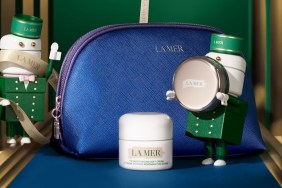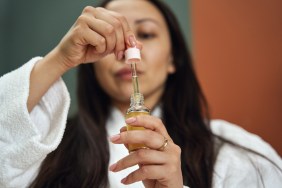When it comes to skin care, dealing with acne and even the mildest of breakouts is tough. Especially when you have oily skin. I have gone through a number of cleansers, masks, moisturizers and spot treatments that could easily last someone else a lifetime. I’ve dealt with acne since I was a teenager and though it’s not completely gone, it’s under control. Now, I’m faced with something much bigger: hyperpigmentation.
As a woman of color, my dark spots from carelessly picking at my face are hanging around like friends who just can’t catch a clue. When those with dark skin (whether African-American, Asian, Latin, Indian or Mediterranean) break the skin from a cut, burn or pimple, skin cells produce more melanin for protection, which results in a dark spot or patch. Since the sun hits the face each time we step outside, dark spots get darker and tend to linger for a few months and can even last years (this is why it’s so important to wear sunscreen daily). Microdermabrasion and chemical peels are quick ways to treat skin discoloration, but aren’t the most cost-effective. Using over-the-counter or prescribed products will take longer to see results, but your wallet will thank you later.
The most important thing to remember when shopping for products to treat hyperpigmentation is the active ingredient. We spoke to dermatologist Dr. Susan Taylor to find out how to get rid of hyperpigmentation using four popular ingredients that work with brown skin.
Hydroquinone
Rundown: The most common way to return skin to its natural glowing complexion is through the use of products containing hydroquinone, a chemical lightening agent that is applied directly to the dark mark. Hydroquinone works by blocking an enzyme that is responsible for the production of the pigment melanin. By blocking the formation of melanin, the dark area will lighten. Hydroquinone products can be purchased over the counter at 1-to-2 percent concentrations or by prescription at 3-to-4 percent concentrations. The prescription products are stronger and hence more effective than the over-the-counter varieties. In either case, the hydroquinone product should be carefully applied to the dark marks — avoiding normal-appearing skin — once or twice a day.
Possible side effects: Redness, irritation and possible burning of the skin. It is also possible for your normal skin tone to become lighter in a ring around the dark discoloration. Should you notice any of these side effects, the product should be discontinued and you must notify your dermatologist.
How long it takes to see results: Three to six months
Retinoids
Rundown: For patients with post-inflammatory hyperpigmentation (PIH) related to acne or pimples, prescription retinoids are another commonly used treatment for both the acne and PIH. Retinoids are derivatives of vitamin A and include Retin-A, Differin and Tazorac. All retinoids are effective in the treatment of acne. Retinoids are to be used sparingly on brown skin. A small green pea-size amount is enough to cover the entire face.
Possible side effects: Irritation, dryness and peeling of the skin. Consequently, it is important to begin treatment only under the direction of your dermatologist and to closely watch your skin’s appearance while using these products.
How long it takes to see results: Up to 40 weeks
[ 10 Best Dark Spot Correctors to Even Out Your Skin Tone ]
Azelaic Acid
Rundown: Azelaic acid is another prescription treatment for both acne and PIH. It has anti-inflammatory, antibacterial and skin-lightening properties. It is particularly useful for individuals who are unable to tolerate the hydroquinone products.
Possible side effects: Skin irritation, burning, itching and redness.
How long it takes to see results: After six months
Glycolic Acid
Rundown: These products work by gently exfoliating the upper-most layer of the skin and the dark marks with it. There are many products that contain glycolic acid. These include cleansers, lotions, gels, toners and creams. The concentration of glycolic acid contained in the products range from 5 to 20 percent. Products with the lower concentrations can be purchased in drugstores, but products containing higher concentrations must be acquired from a dermatologist’s office.
Possible side effects: Skin irritation.
How long it takes to see results: Three to six months
What You Should Stay Away From
Do not buy chemical peels over the internet. They can be too strong for home use and do not use bleaching creams that contain cortisones (skin bleachers). The creams are inappropriately applied to the skin and in many instances are applied for a prolonged period of time. This leads to damaging side effects. The side effects include permanent thinning of the skin, permanent redness of the skin from overgrowth of blood vessels, the appearance of rashes on the skin and uncontrollable outbreaks of pimples.







